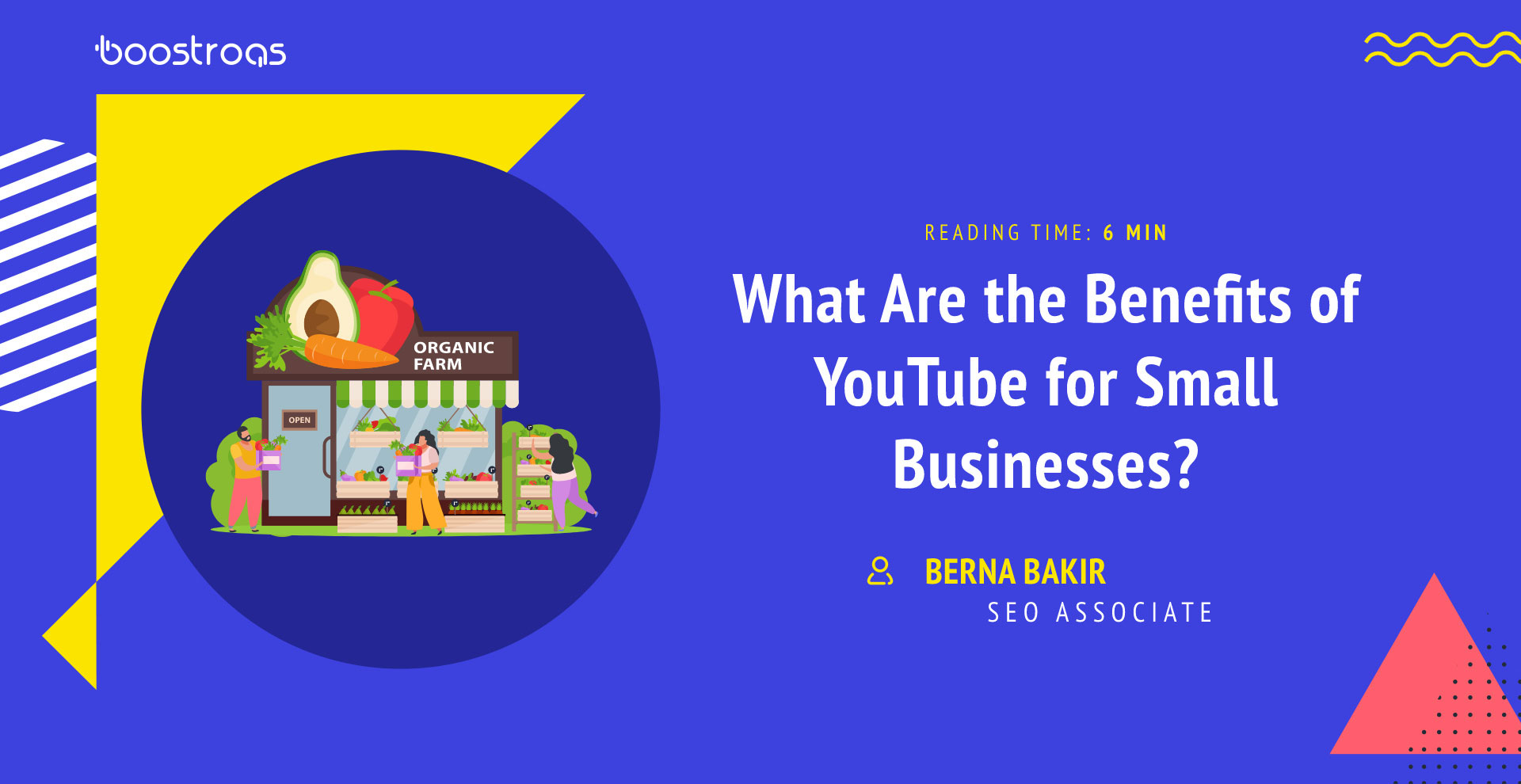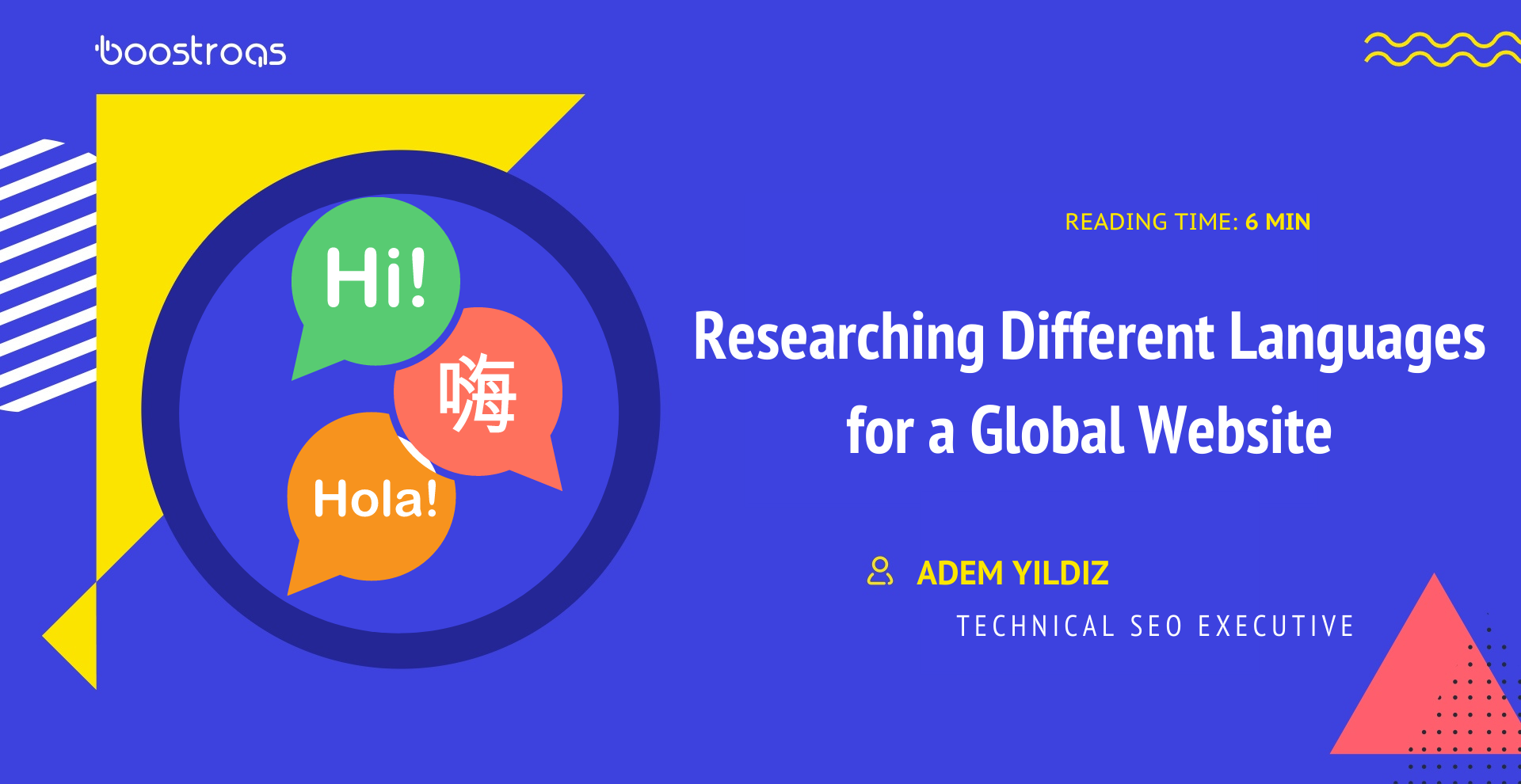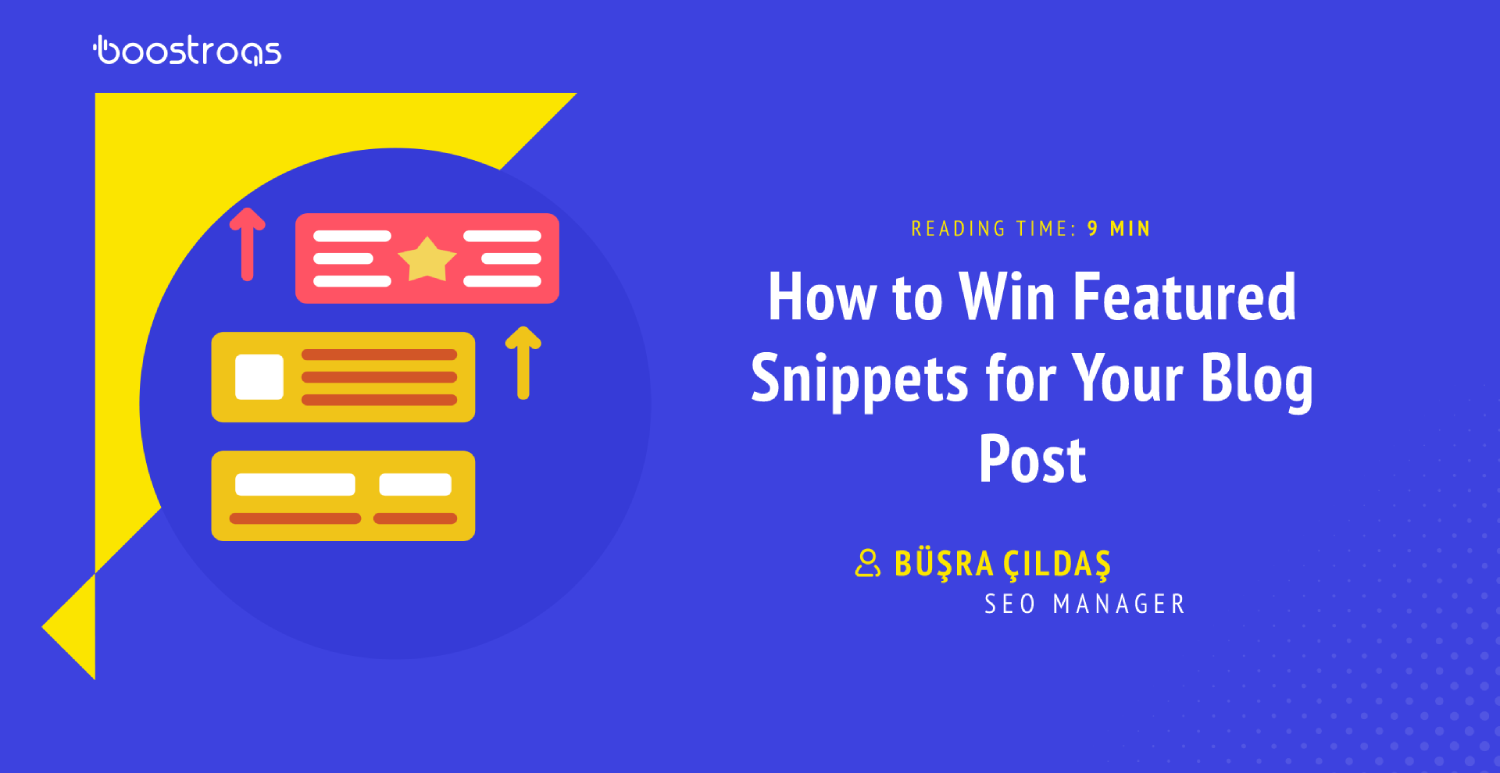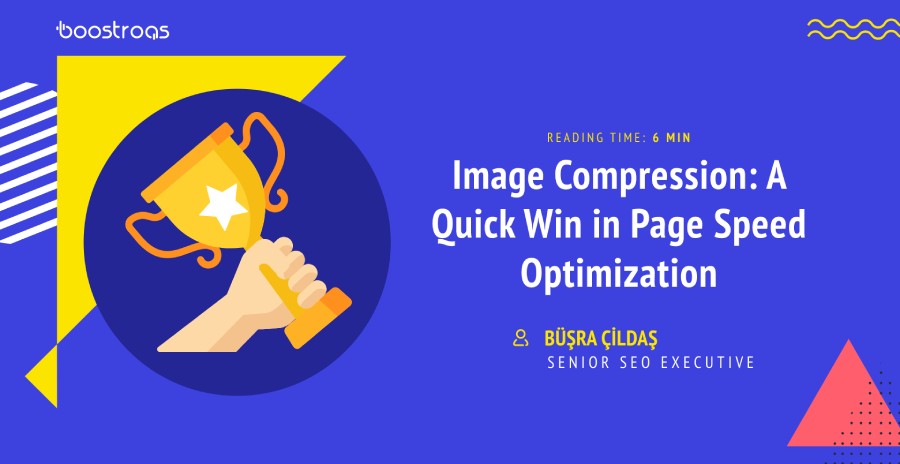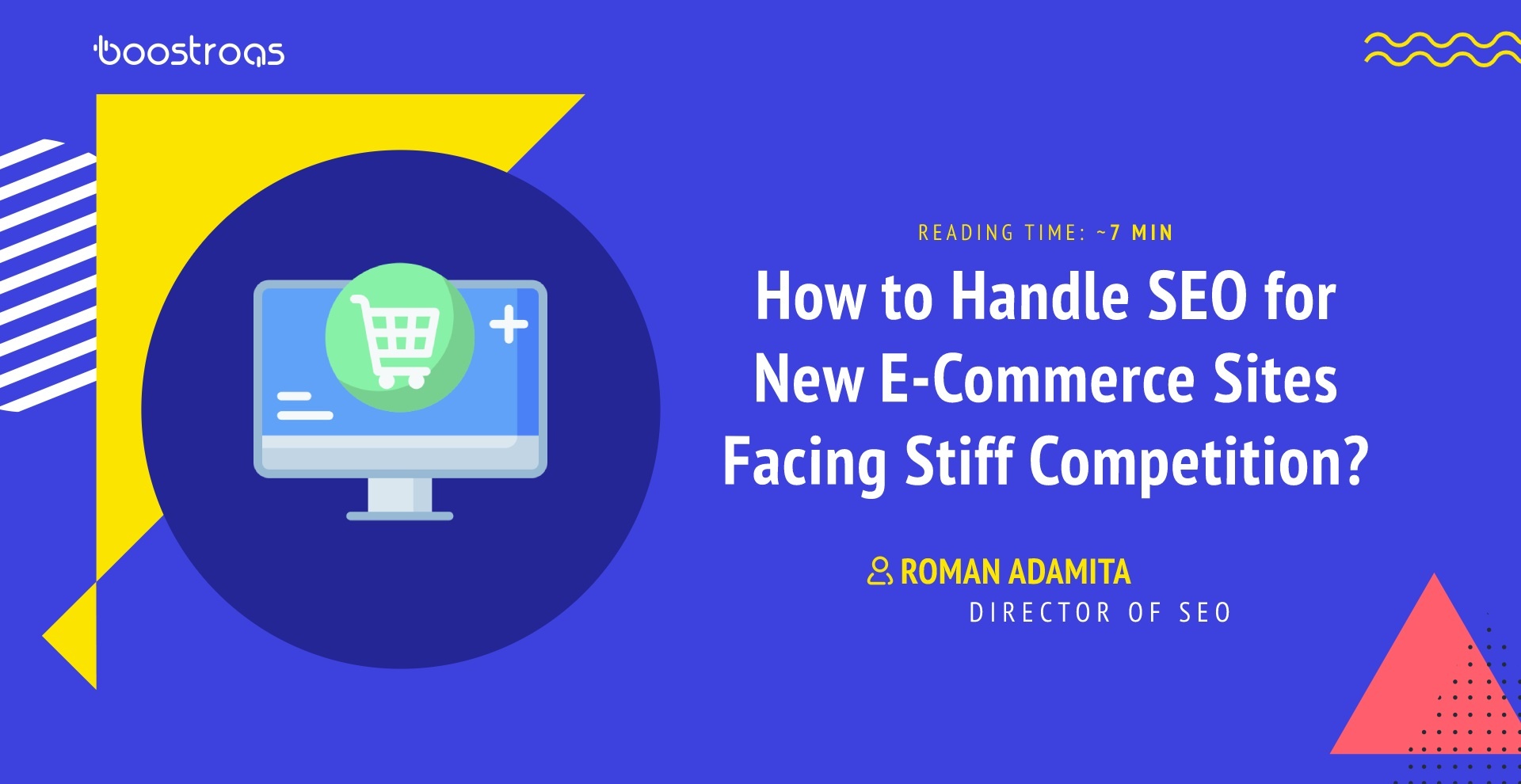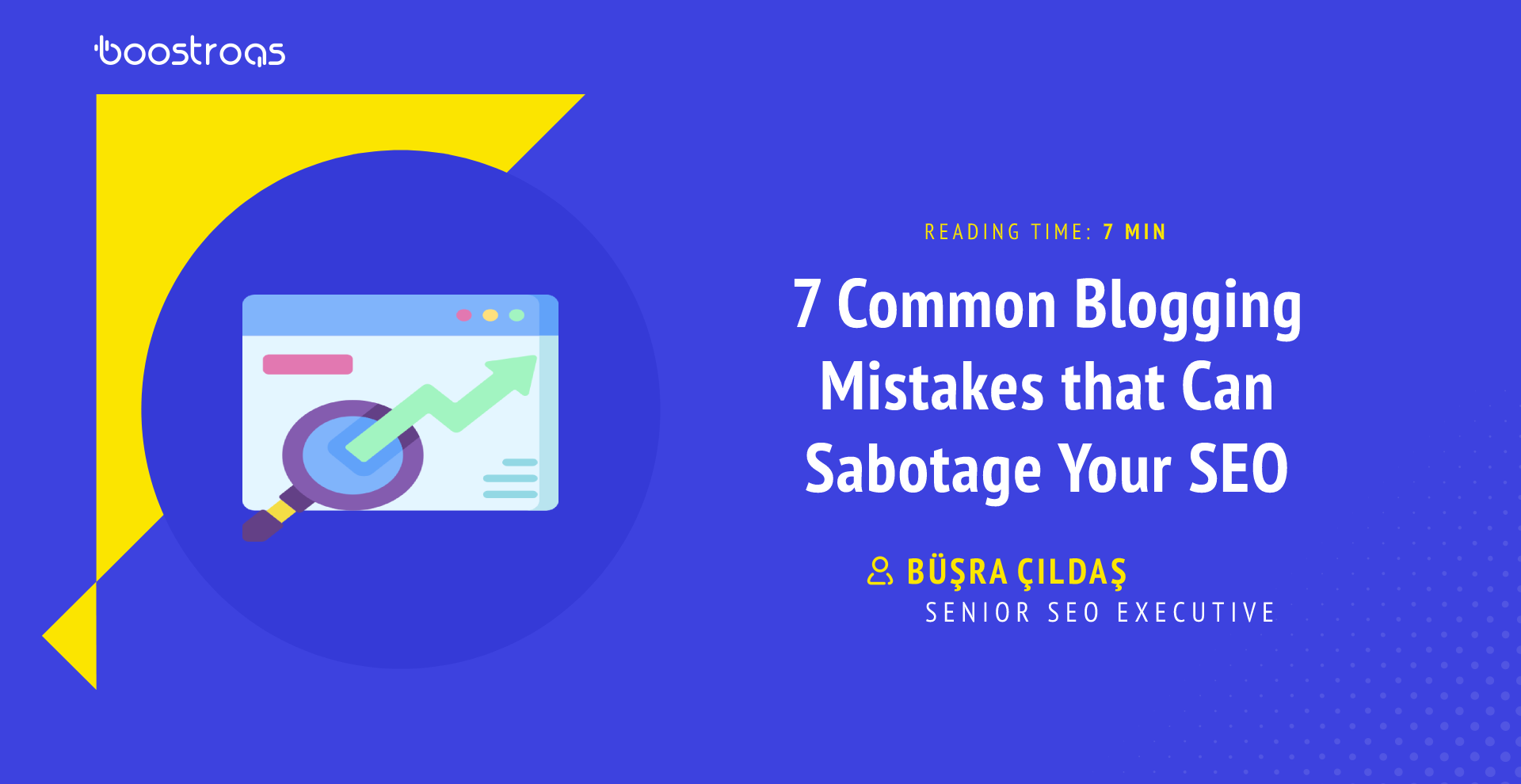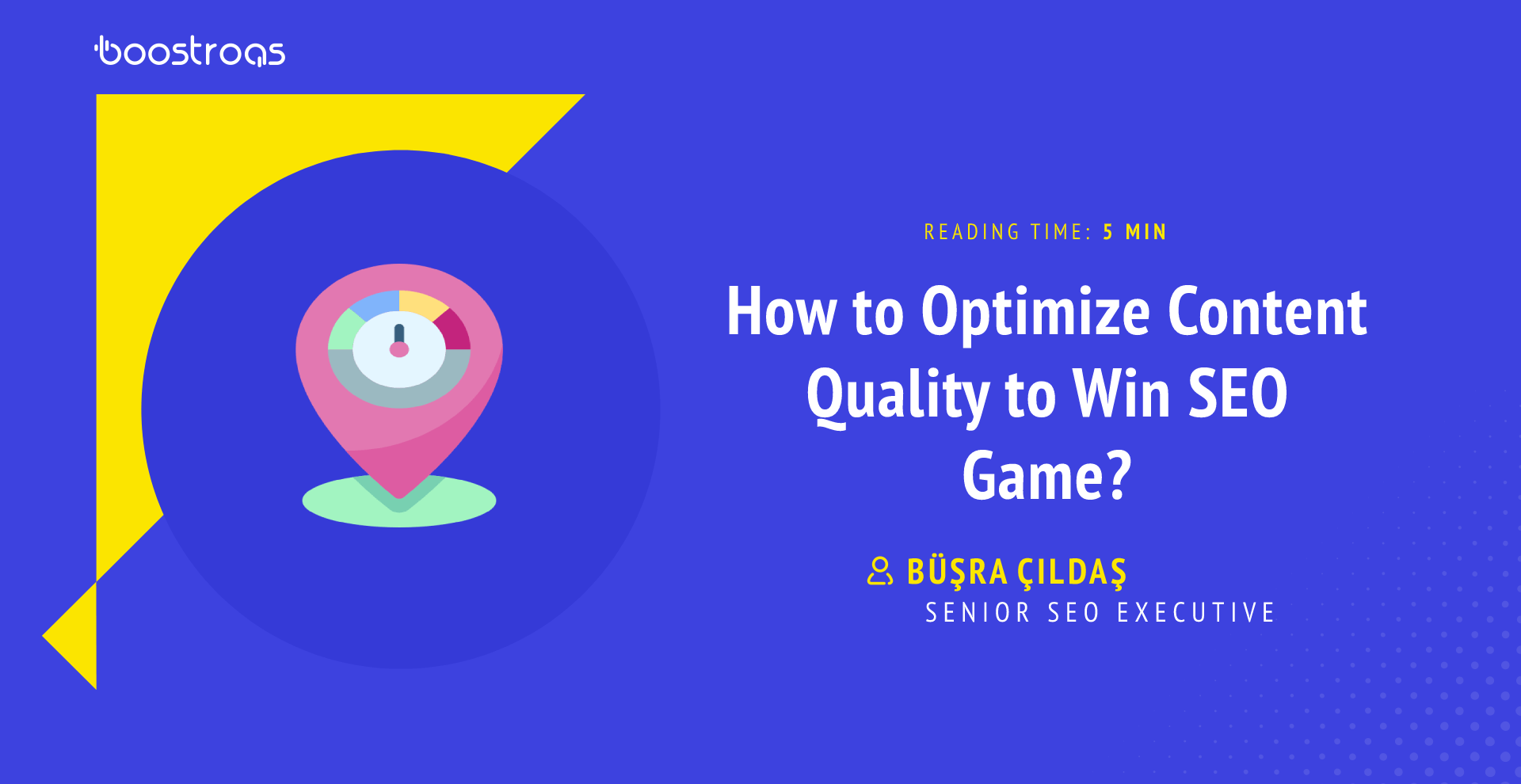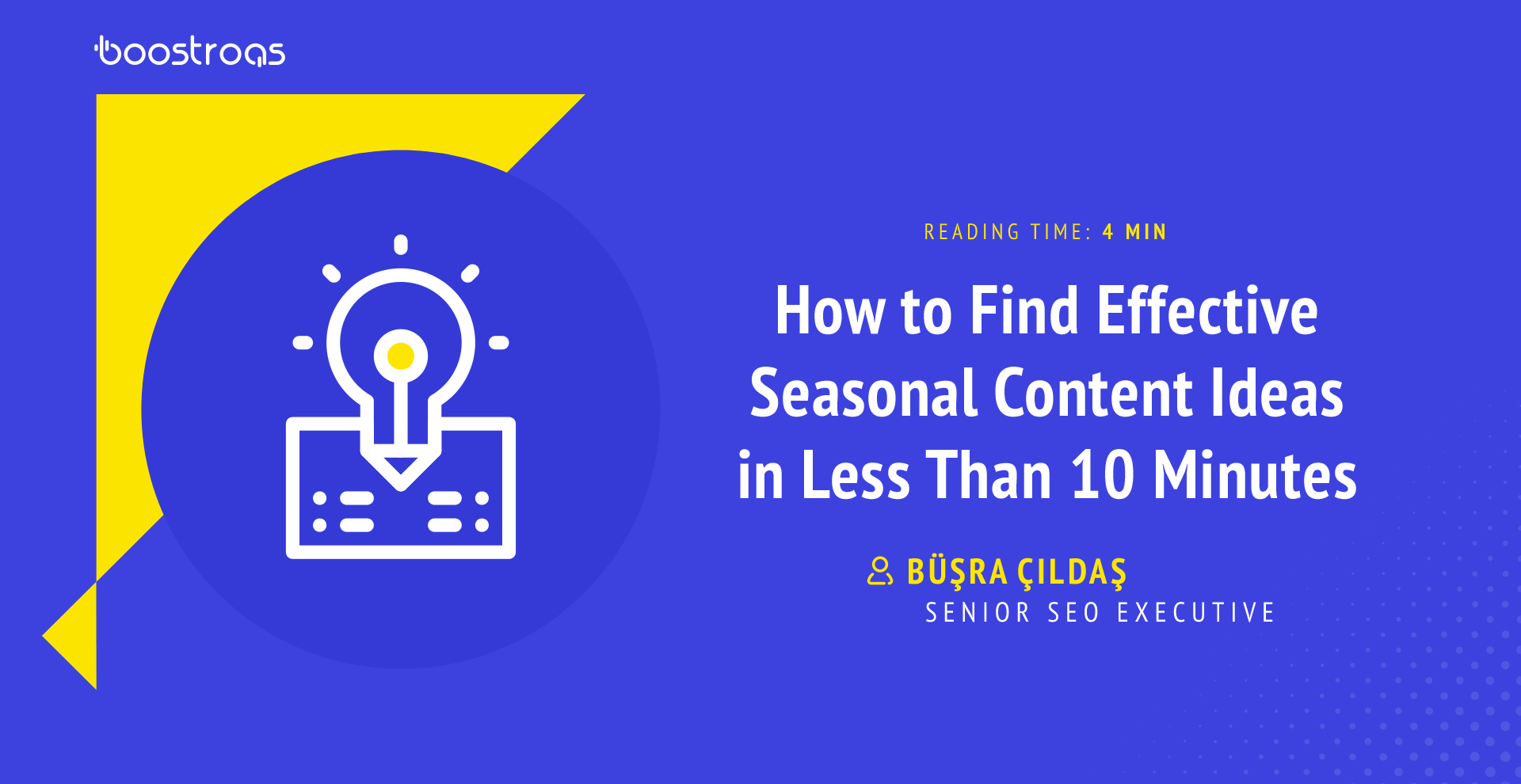Follow us :
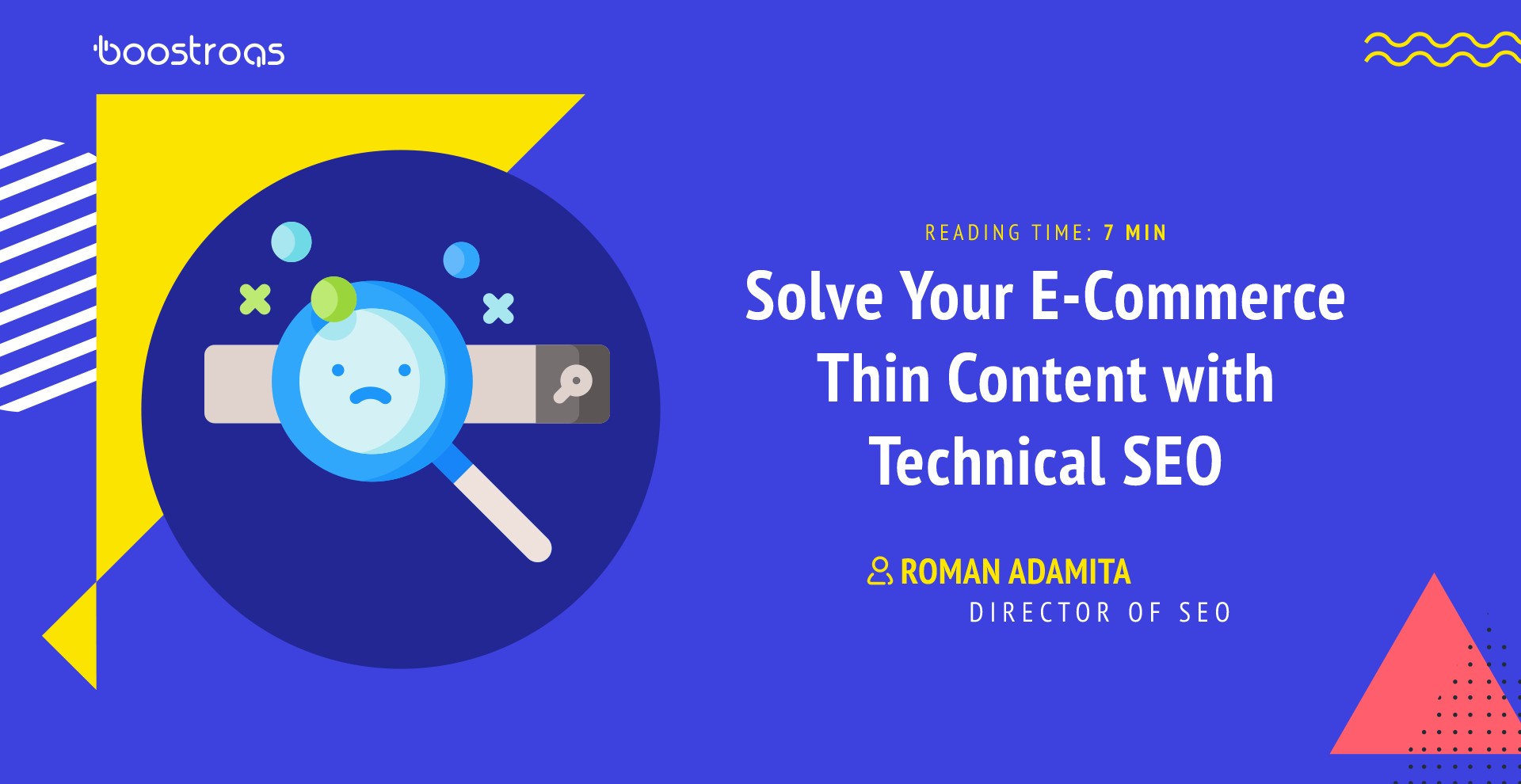
Your e-commerce website might dominate in the industry or might not. Your website might get a huge crowd of visitors from organic search or might get a few visitors daily. Your website might have phenomenal conversions from your mobile application but the mobile web a little bit.
But it’s not the point. The point is that if your e-commerce website has lots of categories, as well products, then somewhere there’s pretty much thin content. You might not see them, but if you don’t control them, then Googlebot will do it in your place.
Even Amazon can have plummeted from organic visibility because of thin content. So there’s not really how big is the website. If you have many pages that do not bring value to the users, you may lose them – which is equal to have dropped from Google organic search results.
What the hell is that thin content?
Pages with thin content are really a pain in the neck. As I mentioned above, thin content pages don’t bring any value to your users in a nutshell. Technically they also called as:
Thin content in an example is:
Imagine that, while you are reading this blog post, in the final, you didn’t get the answer to your question regarding how to solve your thin pages on e-commerce. If it’s not a really specific issue, it will be my mistake because I didn’t research enough the user intent of this topic.
But let’s see specifically what I’ll cover:
- Where am I supposed to start to find thin content on my e-commerce website?
- How to save time via optimizing your thin content with some technical SEO improvements?
- Are there really pages that don’t bring value to my users?
- How do use more effectively the crawl budget on my category and product pages?
In this blog post, you’ll find the answer to these questions. You should know that I’ll do my best to guide you.
Do I lose your interest because of above 300 words? Not sure, but let me gently start. I’ll go high with a technical perspective.
Where to start to find thin content?
1. Go to your Google Search Console property. Click to Index Coverage and check warnings status on the report. If you have it on your website, there should be a “Page indexed without content” report.
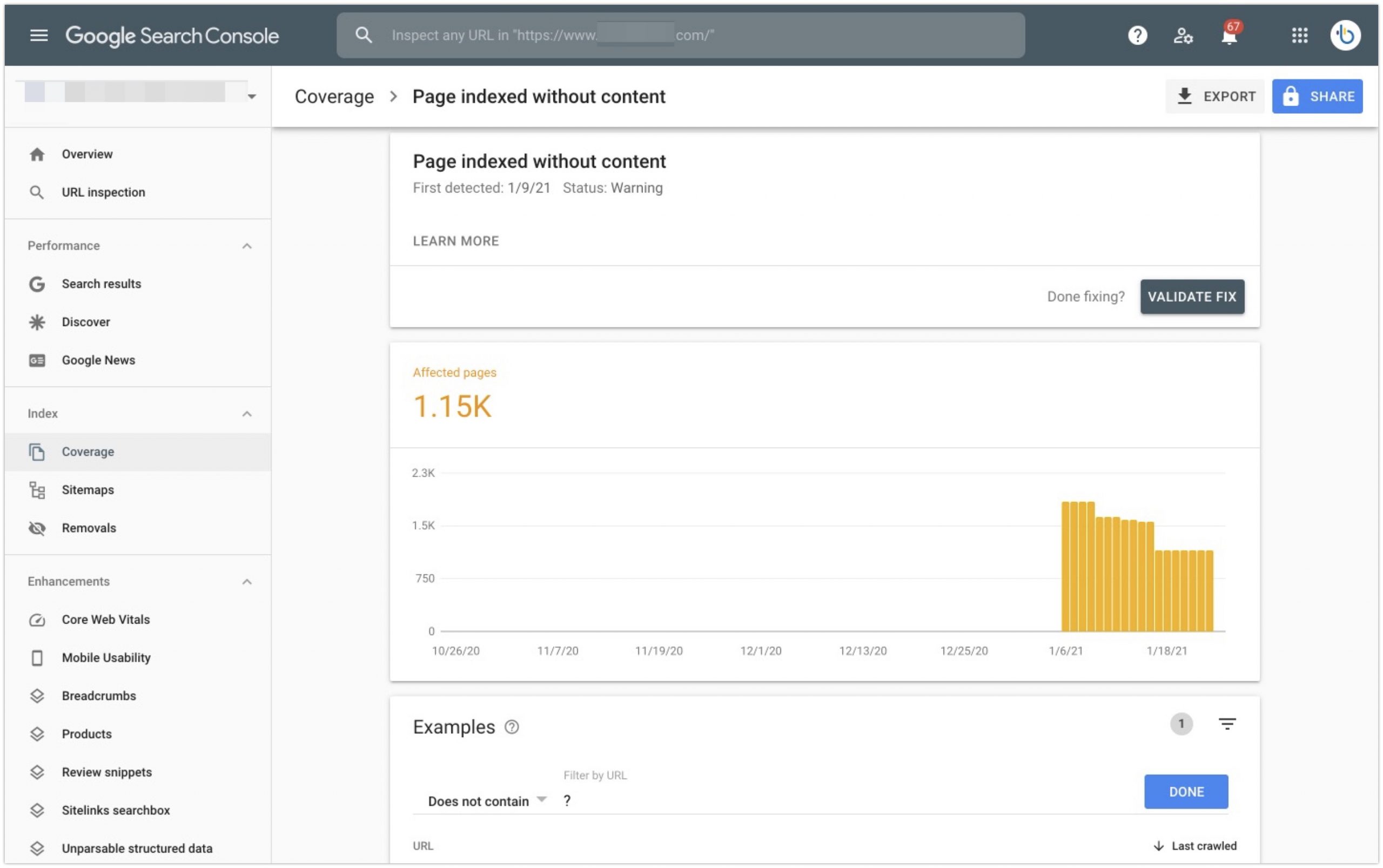
2. Go to your Google Analytics property. Click to Behavior, then Site Content, and then All Pages. Make an advanced filter by excluding landing pages that include “?” and then add a second metric, pages with a bounce rate greater than 90%.
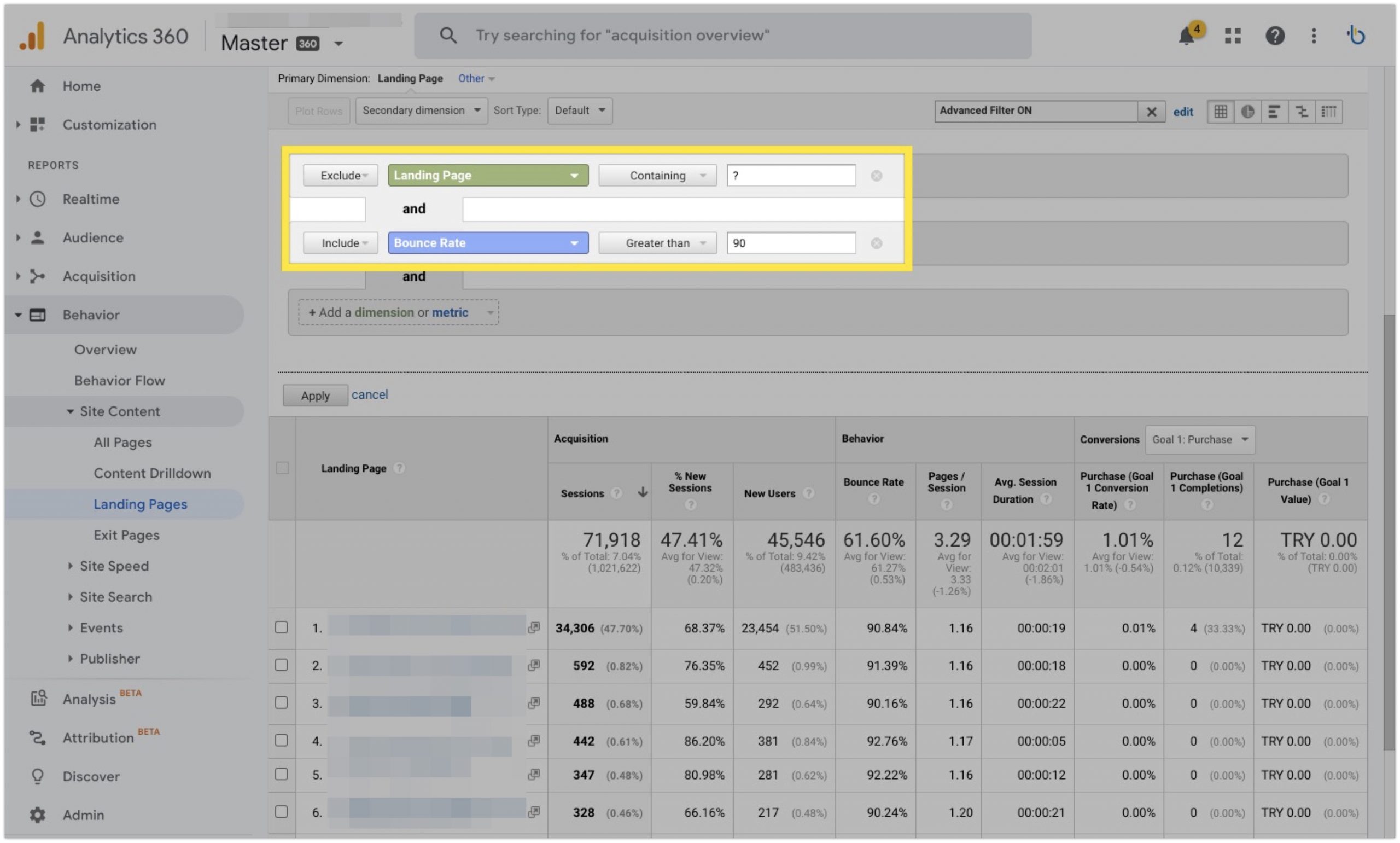
A little notice here. You can find it without losing your time with advanced dimensions. Heybooster has this report already in the Organic Performance report. So feel free to check all the SEO features in there!
3. If you are using DeepCrawl, start a crawl in there for your website. Make your settings, and when you receive your Issues Dashboard, check if there’s a ‘Thin Pages’ report. When you find it, do a filter with Indexable = True.

If you want to know what kind of filters you can use on DeepCrawl, then I highly recommend you to check this document.
4. Last but not least, you can use Screaming Frog SEO Spider. Connect your Google Search Console property by doing these steps. Then go to the Search Console section, arrange clicks, impressions, or average position by the lowest.
-
- Export these landing pages with their organic metrics.
- Then export the same landing pages with their word count.
- And then copy-paste them to a Google Sheet. With the VLOOKUP formula’s help within 2 different exported results, you will get word count vs. organic performance of these landing pages.
(The question you should ask here is, “Is there have really comprehensive enough content?”)
How to deal with the thin content on product categories?
As a result of your conclusions, if you got lots of thin content categories, let’s see what we can improve from a technical perspective.
1. Canonicalization
Firstly, you can canonicalize these kinds of categories to its product page. E.g., if there’s less than 2 products, then:

(That page has automatically translated to English. So ignore the language mistakes.)
Yes, find all categories with just 1 product. If you do not add any products there, make the canonical tag to the product page.
2. Singularization
If you can’t make the above canonicalization rule by working dynamically, delete that kind of category from your website and redirect them to what you consider to be the right one. And don’t forget to add that product to the page your 301-redirected to. Make a category page where users will find where they will be able to choose something perfect for them.

(This website is ranked #2 for the “buy Ethiopia coffee” keyword. Under Amazon!)
To find out how to make your categories well-organized, don’t hesitate to do keyword research with some great tools like Semrush Keyword Magic, Ahrefs Keyword Generator, SEOmonitor Topics, or something else you have on your hand.
What to do with out-of-stock thin product pages? How to fix them?
Well, this one is really very common. Every e-commerce has stock-out products in its categories. The first thing you must take action here is to hide that kind of product from their categories.
1. Learn mistakes from other competitors
Imagine that you are an Italian chef, you cook phenomenal pasta and know everything regarding ingredients. You are going to an Italian restaurant, and you order Carbonara. When you taste it, you find immediately what kind of things are not good in there. Where I come is that you better know your product. So explain it as it should be. Explain it in a way that you will be in love with that product. Let’s summarize it a bit step-by-step:
- Look a bit at your best competitors product pages. Usually, “best” competitors are those who ranked in the Top 3.
- Do keyword research regarding how your audience searches for your product. Optimize your product title and description in that way (you must include those keywords in your content).
- Take a look if there are some videos on YouTube regarding your product. If you find something there, then users might have the intent to watch video content.
- Also, look at how users are searching for this product on Amazon, Etsy, Zappos, etc.
2. Get rid of your out-of-stock products
What you suppose to do with stock-out (for a long time) products usually are straightforward. The easiest options:
- Remove and redirect them to another relevant product.
- Make a bit of conversion-oriented content.
But you also have another option, which I discovered accidentally (practice is everything). If that product will not come for a long time or you don’t know anything about it, then let’s save a bit of your crawl-budget.
Make the canonical tag to its category page where there are relevant products. In such a way, your thin product page will be de-indexed in a while, and the authority of this page will be redirected to its category page. So Googlebot will now crawl this kind of page anymore; instead, it will have more time to crawl other important pages.
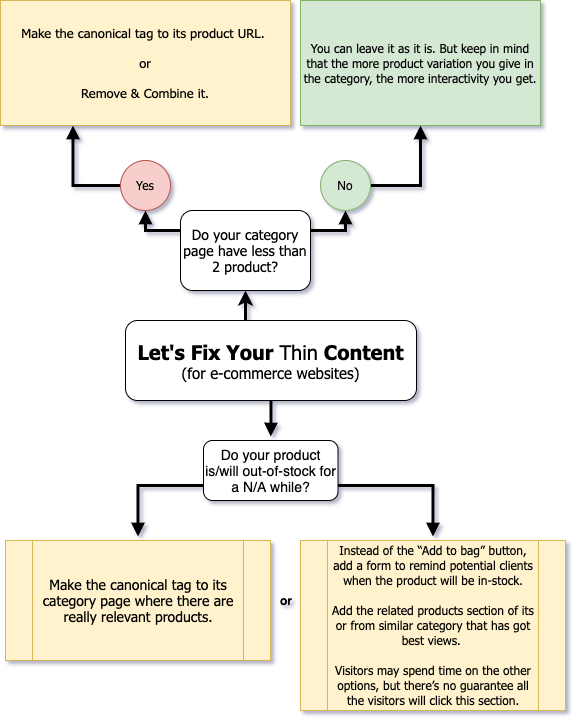
3. Out of stock products might have a conversion-oriented intent
Yes, but if you want. Let’s imagine a funnel for kind of product pages. The steps might be like below:
- You get users from any channel.
- They can be your qualified subscribers.
- Then subscribers might be your leads.
Until you get here, you need to do some optimizations on your product pages.
- Instead of the “Add to bag” button, add a form to remind potential clients when the product will be in stock.
- Add the related products section of its or from a similar category that has got best views.
- Visitors may spend time on the other options, but there’s no guarantee all visitors will click this section.

In conclusion
Thin content is something you shouldn’t get over it. It might be on every website, not just e-commerce. You need to find them and create a creative strategy to solve this problem. By finding the page’s user intent, you also will get the answer to how comprehensive it should be the content.
Don’t miss our Weekly SEO series, where we dive deeply into SEO tips like this!









